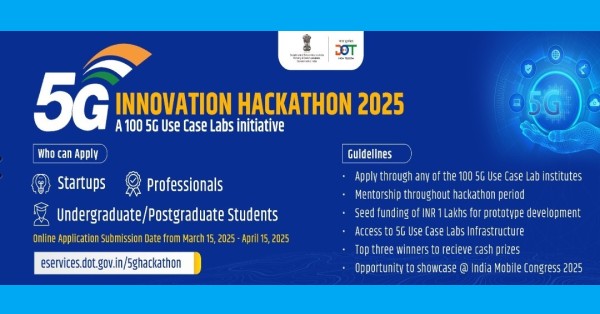Leveraging low-code technology, enables telecom operators to reduce manual intervention, speed up service delivery, and optimize their business processes. Traditional software development methods often hinder progress due to their complexity and lengthy timelines. This is where low-code platforms like VC4’s Service2Create (S2C) are making a difference—empowering telecom operators to automate processes, accelerate development, and integrate seamlessly with existing systems without extensive coding.
This article explores how low-code platforms are shaping the future of telecom operations and why adopting a solution like Service2Create (S2C) can offer a competitive advantage. Service2Create (S2C) is designed to enable telecom operators to customize and automate workflows without extensive coding knowledge, making digital transformation more accessible.
The Need for Digital Transformation in Telecom
The telecom industry faces multiple challenges, including:
- Complex legacy systems that are difficult to integrate and maintain.
- Lengthy software development cycles, slowing down innovation.
- High operational costs due to manual processes and inefficiencies.
- Rising customer expectations for faster service provisioning and personalized experiences.
Understanding Low-Code Platforms
What is a Low-Code Platform?
A low-code platform allows businesses to develop and deploy applications with minimal hand-coding. These platforms provide a visual development environment, where users can drag-and-drop components, use pre-built templates, and automate workflows without requiring extensive programming knowledge.
Key Features of Low-Code Platforms in Telecom:
- Drag-and-Drop Interface: Simplifies application development.
- Pre-Built Connectors: Enables easy integration with telecom networks and business support systems (BSS).
- Workflow Automation: Reduces manual intervention in service provisioning.
- Rapid Deployment: Accelerates time-to-market for new telecom services.
- Scalability & Flexibility: Supports future expansions and modifications with minimal coding.
According to a report by MarketsandMarkets, (1), the global low-code development platform market is projected to grow from USD 13.2 billion in 2020 to USD 45.5 billion by 2025, at a Compound Annual Growth Rate (CAGR) of 28.1% during the forecast period.
The Role of Service2Create in Telecom Operations
What is Service2Create?
Service2Create (S2C) is a cloud-native, low-code/no-code platform designed to streamline telecom operations. It provides a powerful toolkit to enhance network inventory management, automate workflows, and integrate GIS capabilities seamlessly.
Key Benefits of Service2Create (S2C):
Unified Network Inventory Management
- Integrates various network elements—logical, physical, virtual, and service—into a single platform.
- Provides real-time visibility, reducing errors and inefficiencies.
Enhanced Process Automation
- Automates network provisioning and service activation.
- Minimizes manual configurations, ensuring faster deployments.
Seamless Integration Capabilities
- Connects effortlessly with existing OSS/BSS systems, CRM platforms, and third-party applications.
- Ensures interoperability with current IT and network infrastructures.
Cost Efficiency and Operational Optimization
- Lowers development expenses by reducing reliance on custom-coded solutions.
- Boosts productivity by automating repetitive tasks.
Transformative Impacts of VC4 Service2Create on Telecom Operations
Streamlining Network Inventory Management: One of the biggest challenges in telecom operations is managing vast and complex network infrastructures. VC4 Service2Create centralizes data from multiple sources, eliminating data silos and ensuring accurate real-time tracking of network components.
Benefits:
- Reduces inefficiencies caused by outdated or duplicated network records.
- Enhances resource utilization by identifying idle or underutilized assets.
Enhancing Operational Efficiency: With built-in automation, Service2Create eliminates manual processes that slow down service provisioning and maintenance. Automated workflows ensure faster execution of network changes and seamless integration with existing systems.
Impact:
- Cuts down operational time by automating repetitive processes.
- Reduces manual errors, leading to improved network reliability.
Accelerating Service Delivery: By reducing the time required to develop and deploy applications, telecom operators can respond swiftly to new business opportunities, network expansion needs, and regulatory changes.
Advantages:
- Faster provisioning of new services such as MPLS, FTTH, and leased lines.
- Improved responsiveness to market demands and customer needs.
Should Operators Adopt Low-Code Platforms?
The telecom industry is under immense pressure to keep up with increasing demands for network expansion, efficient service delivery, and regulatory compliance. Traditional software development methods can often lead to delays, high costs, and operational inefficiencies. Low-code platforms present a viable solution by enabling faster, more flexible, and cost-effective application development.
The Case for Low-Code Adoption in Telecom:
- Alleviate IT Workloads: Empower business users to build and modify applications.
- Shorten Deployment Cycles: Ensure faster time-to-market for new services.
- Enhance Agility: Allow operators to swiftly respond to market changes.
- Support Compliance and Security: Offer built-in governance features.
- Continuous Innovation Cycle: The combination of shorter development cycles and easier updates encourages ongoing improvements thus staying competitive
- Scalable “Template” Deployment: Operators can create standardized templates for workflows or applications
- Upskilling and Workforce Engagement: Shifting certain development tasks to a low-code environment creates learning opportunities for current staff.
A study by Kissflow, (2) indicates that no-code and low-code platforms can reduce application development time by up to 90%, highlighting their efficiency in accelerating service delivery.
Future Prospects of Low-Code Platforms in Telecom
The future of telecom operations is being shaped by digital transformation, and low-code platforms are playing a central role in this evolution. As technology advances, telecom providers will increasingly rely on these platforms too:
- Enable AI-driven automation – Integrating AI capabilities into low-code platforms will allow telecom operators to automate decision-making processes and predictive maintenance more effectively.
- Enhance 5G and Edge Computing Deployments – Low-code solutions will help streamline 5G network rollouts and optimize real-time edge computing operations.
- Support IoT and Smart Network Innovations – The telecom industry is expanding into IoT-driven ecosystems, and low-code platforms will simplify the development and management of IoT applications.
- Improve Cross-Industry Integrations – Telecom operators will be able to integrate low-code applications with fintech, healthcare, and other industries for expanded service offerings.
- Accelerate No-Code User Empowerment – The next phase of low-code adoption will focus on fully no-code solutions, enabling non-technical users to create applications and manage workflows with zero coding experience.
With continuous improvements in automation, AI, and cloud-native solutions, low-code platforms like Service2Create (S2C) will remain at the forefront of telecom innovation.
Conclusion: The Future of Telecom with Low-Code Platforms
Platforms like VC4 Service2Create (S2C) provide telecom operators with the ability to automate, integrate, and innovate without the complexity of traditional coding.
By adopting low-code solutions, telecom providers can also :
- Accelerate digital transformation.
- Improve operational efficiency.
- Reduce costs and IT dependencies.
- Deliver better, faster services to customers.
Are you ready to transform your telecom operations with low-code automation? Contact VC4 today to explore how Service2Create can streamline your business processes and drive innovation.
Frequently Asked Questions (FAQs)
Q1: What makes low-code platforms different from traditional software development?
Low-code platforms provide a visual, drag-and-drop development environment, allowing users to build applications with minimal coding. Traditional development requires extensive programming, leading to longer development cycles and higher costs.
Q2: Can telecom operators integrate low-code solutions with existing legacy systems?
Yes. Platforms like Service2Create (S2C) come with pre-built connectors that allow seamless integration with legacy OSS/BSS systems, CRM platforms, and billing systems.
Q3: How does Service2Create improve telecom service provisioning?
S2C automates service activation, reducing manual configurations and errors. This leads to faster service deployment, improving customer satisfaction and reducing operational costs.
Source: https://kissflow.com/low-code/low-code-trends-statistics/

























